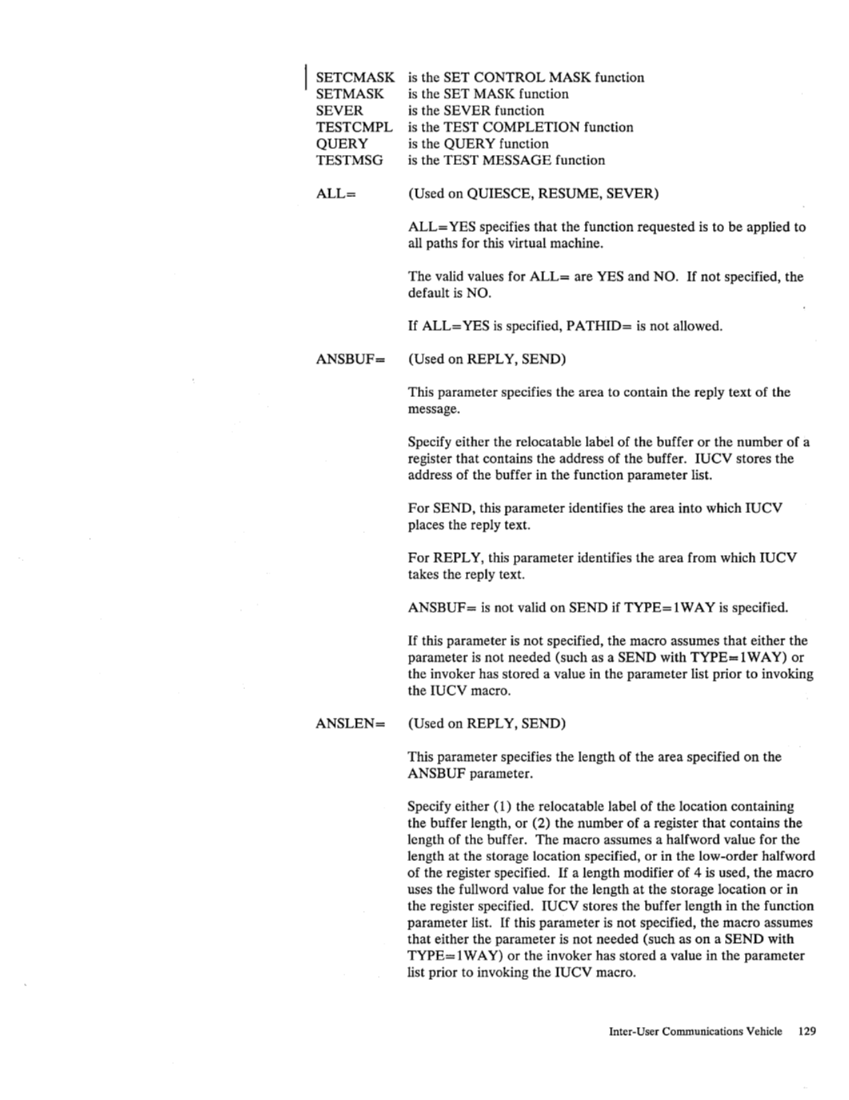is the
is the
is the
is the
is the
all paths for this virtual machine.
The valid values for ALL= are
default is
message.
register that contains the address of the buffer.
address of the buffer in the function parameter list.
For
For REPLY, this parameter identifies the area from which
If this parameter is not specified, the macro assumes that either the
parameter is not needed (such as a
the invoker has stored a value in the parameter list prior to invoking
the
the buffer length, or (2) the number of a register that contains the
length of the buffer. The macro assumes a halfword value for the
length at the storage location specified, or in the low-order halfword
of the register specified. If a length modifier of 4 is used, the macro
uses the fullword value for the length at the storage location or in
the register specified.
parameter list. If this parameter is not specified, the macro assumes
that either the parameter is not needed (such as on a
TYPE= 1 WAY) or the invoker has stored a value in the parameter
list prior to invoking the
Inter-User Communications Vehicle 129



































































































































































































































































































































































































































































































































































































































